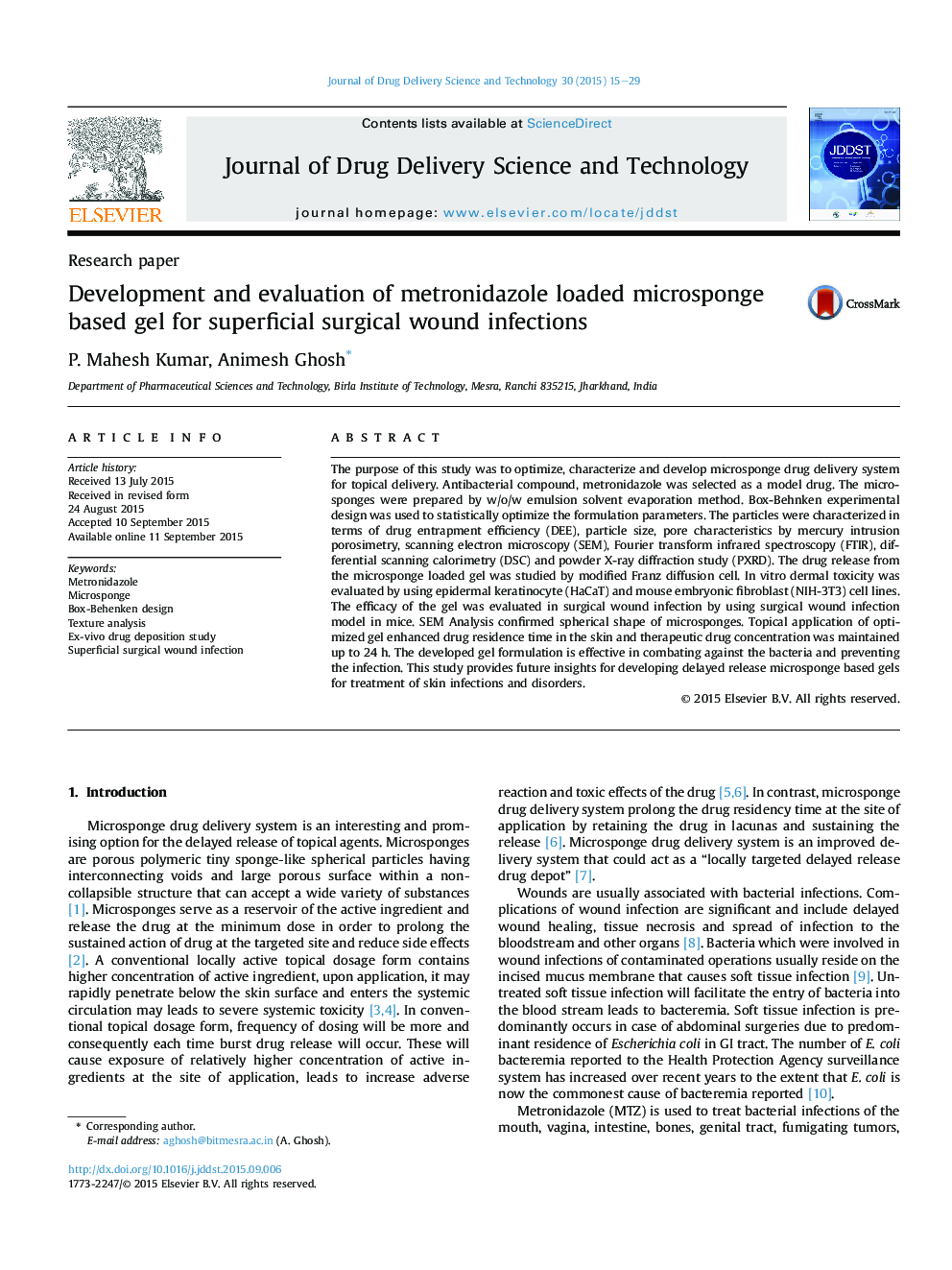| Article ID | Journal | Published Year | Pages | File Type |
|---|---|---|---|---|
| 2483169 | Journal of Drug Delivery Science and Technology | 2015 | 15 Pages |
The purpose of this study was to optimize, characterize and develop microsponge drug delivery system for topical delivery. Antibacterial compound, metronidazole was selected as a model drug. The microsponges were prepared by w/o/w emulsion solvent evaporation method. Box-Behnken experimental design was used to statistically optimize the formulation parameters. The particles were characterized in terms of drug entrapment efficiency (DEE), particle size, pore characteristics by mercury intrusion porosimetry, scanning electron microscopy (SEM), Fourier transform infrared spectroscopy (FTIR), differential scanning calorimetry (DSC) and powder X-ray diffraction study (PXRD). The drug release from the microsponge loaded gel was studied by modified Franz diffusion cell. In vitro dermal toxicity was evaluated by using epidermal keratinocyte (HaCaT) and mouse embryonic fibroblast (NIH-3T3) cell lines. The efficacy of the gel was evaluated in surgical wound infection by using surgical wound infection model in mice. SEM Analysis confirmed spherical shape of microsponges. Topical application of optimized gel enhanced drug residence time in the skin and therapeutic drug concentration was maintained up to 24 h. The developed gel formulation is effective in combating against the bacteria and preventing the infection. This study provides future insights for developing delayed release microsponge based gels for treatment of skin infections and disorders.
Graphical abstractFigure optionsDownload full-size imageDownload as PowerPoint slide
